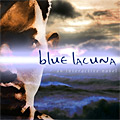Blue Lacuna — 468 of 475
Aaron A. Reed
Volume - The Epilogues (in Lacuna-Epilogue by Blue Lacuna)
[The Epilogue is a complex sequence which attempts to provide emotional closure based on the path the player has taken through the game. Though the complexities of the player's choices will be presented as much as possible, there are basically one of three endings, which happen in the following priority: A) the player likes Rume, B) the player likes Progue, C) the player dislikes both.
There are several possible states we might be in arriving at this sequence, which colors its presentation.
1. Progue is either 1) dead (killed by the player or suicide), 2) healed and happy, or 3) healed and sad. We cannot get ending B if 1.1 is true. (if progue is dead, if progue is healed and happy, if progue is healed and sad.)
2. Irregardless of this, he will be in one of the twelve archetypes. (if neurotic dad, if father knows best, if bitter dad, if disciplinarian, if lover, if twitterpated, if friend, if toady, if shattered lover, if bitter lover, if enemy, if slave)
3. The player chose to put the fate of Lacuna in the hands of the trees, the rebels, Progue, or no one (end-choice [end-trees or end-rebels], end-both, end-abstain, end-neither). The fate of Lacuna actually ended up in the hands of 1) the trees, 2) the rebels, or 3) up for grabs (either no password or the equipment is destroyed). (won-trees, won-rebels, won-neither.)
In all 3 endings, we begin with a dream mirroring the prologue. The player is again asked to choose between art and love, with dialogue differing based on their choice way back at the beginning of the game, and the various factors above. (For instance if Ending C has been chosen, the player is thwarted in their attempt to choose love.)
The dream resolves into a conversation-- with who and about what varies as detailed below, but the first part is about the player's choice, how it compares to their choice at the beginning of the game, and how it relates to their #3 decision.
If ENDING A, the conversation is with Rume about prodding the player to realize that somenium might allow them to return to Rume. Since it makes connections regardless of distance, and Rume's eyes are the exact shade of the crystal... maybe there's a chance.
If ENDING B, the conversation is with a grown Lethe, and about the loopholes in wayfaring, and designed to make the player realize Progue might still have a chance to be reunited with his daughters.
If ENDING C, the conversation is with Doctor Quick, and about how a wayfarer is eternally alone (like the Rebels). Similar themes to the end of the Preludes. To make art is to turn away from life. Is that what you really want?
The player awakens:
If ENDING A, they are in the studio on the beach. Progue (if alive and friendly) is bringing the last of the paints; otherwise they are already there. He gives the player a brush and asks you to choose a color. You choose; if blue, you begin a portrait of Rume; otherwise, you prepare to move on with your life.
If ENDING B, you are on the Rise, and Progue has just started to chisel at his statue. You fill him in on your dream; he carves a beautiful sculpture of Phoebe and Lethe, and vanishes.
If ENDING C, you are in the rain forest. You are hunting boar to make your canvas to leave. You kill one, and reflect on the fate of the island and on solitude as you prepare to depart.
]
To decide whether won-trees:
if mind machinery is off-stage, no;
if fc_choosenowno is spoken, no;
if ending_1c is spoken, yes;
if ending_1a is spoken or ending_1b is spoken, no;
if end-trees, yes;
no.
To decide whether won-rebels:
if mind machinery is off-stage, no;
if fc_choosenowno is spoken, no;
if ending_1d is spoken, yes;
if ending_1a is spoken or ending_1b is spoken, no;
if end-rebels, yes;
no.
To decide whether won-neither:
if won-trees, no;
if won-rebels, no;
yes.
